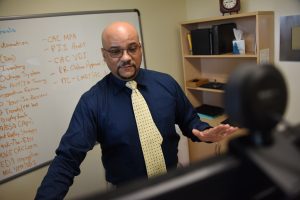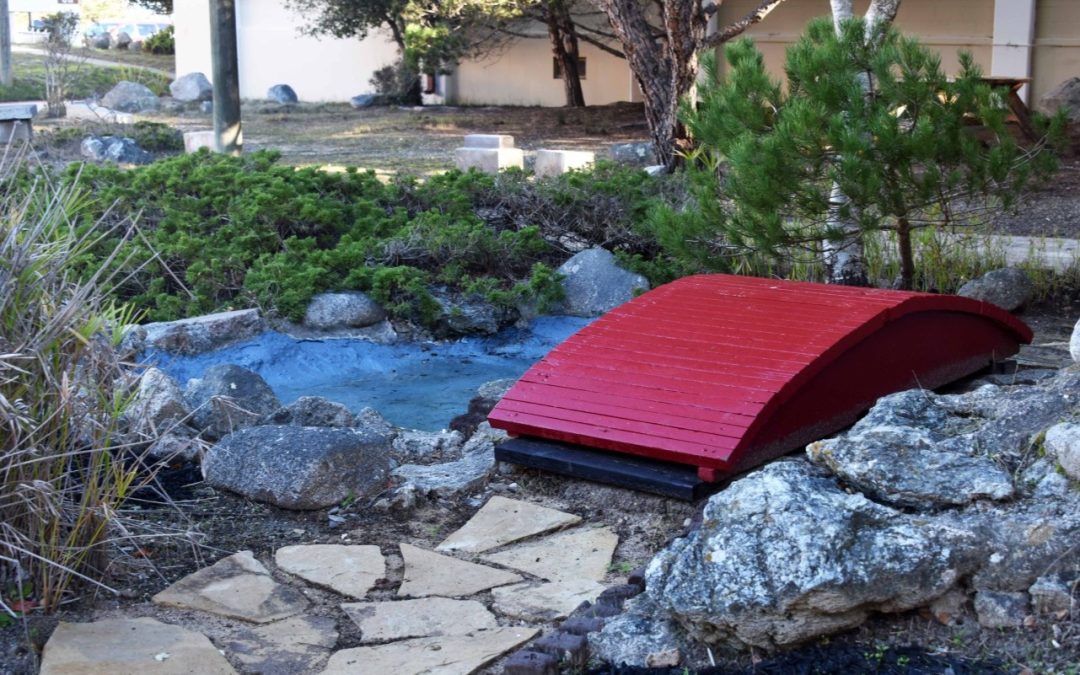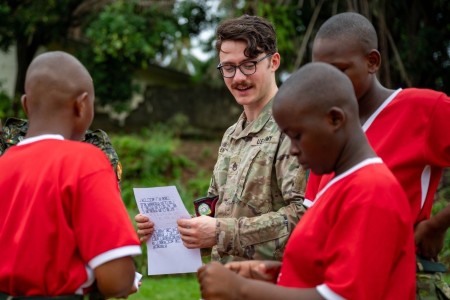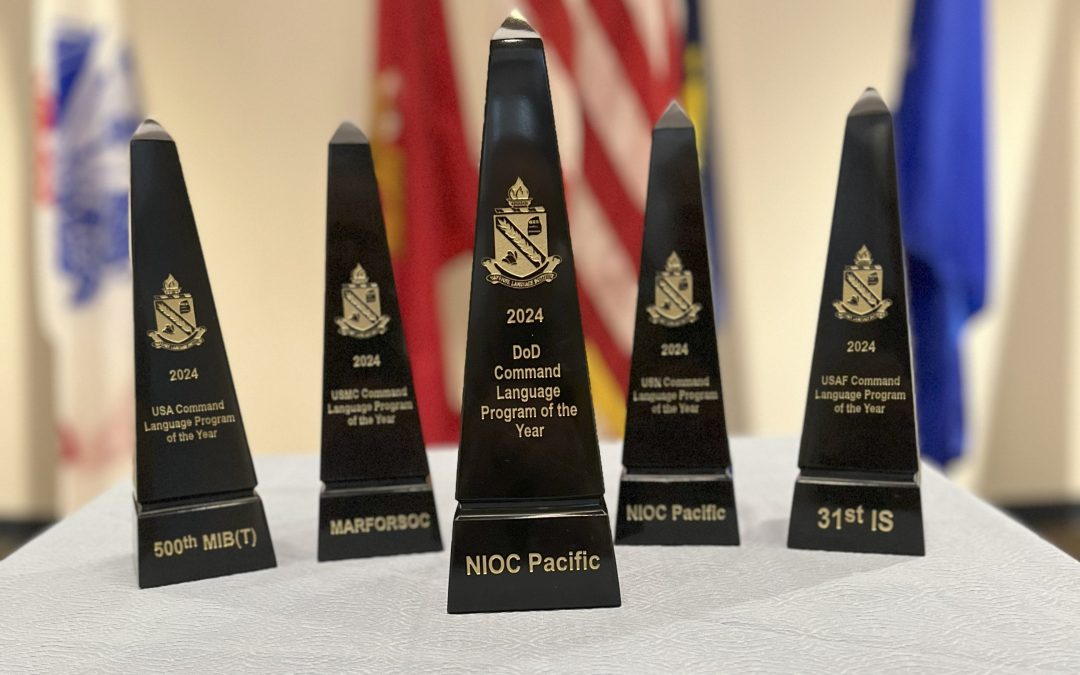By Natela Cutter, Mission Public Affairs
Before the pandemic, using remote technology in the classroom was nice to have, good for keeping students up to speed, but it wasn’t something that students and teachers couldn’t live without.
Overnight, conferencing platforms and the technology to make it happen became a must-have. The Defense Language Institute Foreign Language Center was fortunate because it already had the hardware and software to fully function, as the pandemic took hold of the nation.

Miles Darnell, chief information officer at DLIFLC, is speaking with a colleague via Microsoft Teams. (photo by Natela Cutter)
“Early on, I started receiving calls from my son’s school, asking for assistance because they knew that I was some tech guy at DLI,” said Darnell Miles, chief information officer at the Institute, whose son is in middle school. “Their challenge was with the incorporation of a viable conferencing platform, whereas at DLI, we already had an infrastructure and had just introduced Office 365 with MS [Microsoft] Teams conferencing capabilities.”
“The decision was fortuitous in that without this [MS Teams], DLIFLC would not have had an online academic teaching platform to conduct virtual training,” said deputy Chief of Staff for Operations Joseph Kuykendall. “It would have subsequently required DLIFLC to consider canceling language classes altogether.”
As it turned out, DLIFLC didn’t lose a day of class in the transition to online learning.
Apart from the technology challenges, Miles’ team also had to figure out a practical, safe and efficient way to distribute mobile devices to students who continued to in-process, regardless of the pandemic.
“During the first days of the pandemic, when the entire installation was on lockdown and the students were in their barracks, we had to figure out a way to get their equipment to them,” said Marvin Middlebrooks, supervisor of the technology distribution center at DLIFLC.
Thinking outside of the box, Middlebrooks proposed to have the equipment for new students loaded onto a truck and taken to them. “We were essentially having people sign up for their laptops in the parking lot. We did the same thing for students who were out-processing,” explained Middlebrooks, referring to service members who graduate nearly every Thursday.
Several weeks down the road, when the virus was understood better, the technology distribution center devised a system by which the students would make appointments and come to the facility in small groups to sign for their devices and get training.
“We had people standing outside the door, letting them in three at a time,” said Darryl Temple, with a clipboard in his hands that contained the appointment times and names of students who were coming for pickup. “I have been here every day from the beginning,” said Temple with a smile.
Today, up to seven students are let into the distribution center and led into a room with desks neatly lined up in two rows and socially distanced by six feet. At the head of the makeshift classroom, hand sanitizer and wipes are located on a small table. Three staff members are present to assist. Everyone is masked.
While a good part of IT duties consist of configuring laptops with foreign language specific software for students, what is often omitted is the role the distribution center played in providing instructors with extra equipment.
“It was crazy,” recalled Middlebrooks. “At the beginning of the pandemic, we had to either provide large screens for the teachers to take home or do lateral transfers for equipment from their offices.” Providing more keyboards, mice and loading software was all part of the process.
A year later, with vaccination underway, DLIFLC staff and students are starting to see that returning safely to the classroom will take place in the not so distant future.
Though technology will never replace face-to-face teaching, a part of what the pandemic has taught the Institute is that some aspects of teaching, learning and communication has been just as effective online.
“I think this experience has taught us that a lot of meetings from a management perspective have been very effective online because more people can participate than you can fit in a physical space,” concluded Miles.




